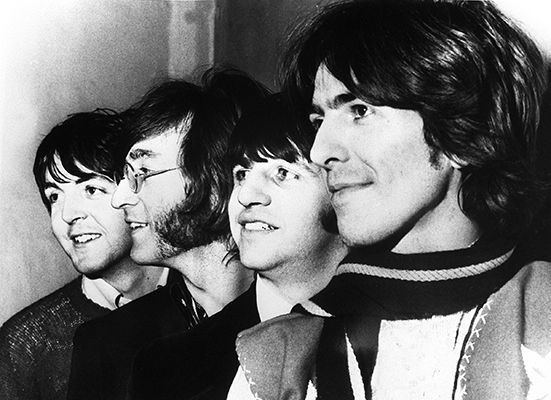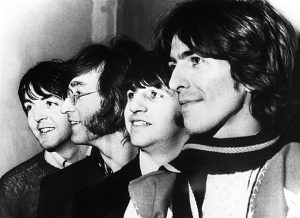By Rob Sheffield, Rolling Stone | Fifty years ago, the Beatles went through rock’s most famous breakup. Inside the heartbreak, the brotherhood, and why the music still matters. It’s a miserable Monday morning in January 1969, and the Beatles are trying to get back to where they once belonged. The Get Back project sounded like a perfect idea: just the four lads and their instruments, ready to hit the studio, return to their roots, conjure up some great songs out of thin air. Just like they used to. John, Paul, George, and Ringo have booked a TV concert special for January 18th — their first live show in years. They’ll rehearse for a couple of weeks, eyeball to eyeball, summon up genius on the spur of the moment. They’ve done it many times before. They’ve never not done it.
The good news: Paul showed up today, and so did Ringo. So did the camera crew — these sessions are being filmed, so the Beatles can show a half-hour clip of rehearsal footage before their TV performance. So here they are on Monday morning, ready to dazzle the world with a blast of spontaneous Beatles brilliance. Or at least Paul and Ringo are. Hey, has anyone heard from John and Yoko? Or George?
With George, there’s a slight complication: He quit the band. On Friday, with the cameras rolling, he was trying to teach them a new song, “All Things Must Pass.” John, strung out on his new heroin habit, sneered at George with open contempt. George finally stormed out, muttering, “See you around the clubs.” John doesn’t take this seriously. “I think if George doesn’t come back by Monday or Tuesday, we ask Eric Clapton to play in it,” he says. “The point is, if George leaves, do we want to carry on the Beatles? I do. We should just get other members and carry on.”
But now it’s Monday and still no George. No John and Yoko. (No Clapton, for that matter.) Paul and Ringo kill time jamming on a current radio hit, “Build Me Up Buttercup.” But everyone gathers to discuss the crisis, complaining bitterly about Yoko’s constant presence. Surprisingly, the one who sticks up for her is Paul. He’s a sucker for a love story — he’s Paul McCartney, for God’s sake. But he also knows how much this romance means to his oldest, closest mate, his most troubled and cruel and impossible friend. “It’s not that bad,” he insists. “They want to stay together, those two. So it’s all right. Let the young lovers be together.”
Paul has to chuckle, thinking about how future generations will look back at this — the Beatles, the greatest of all rock & roll bands, the world’s most legendary creative team, falling apart over such a trivial spat. Even on a winter morning as gloomy as this one, Paul breaks into a laugh.
“It’s gonna be such an incredible sort of comical thing, like in 50 years’ time, you know. ‘They broke up because Yoko sat on an amp!’?”
Paul wasn’t wrong. Fifty years later, people still obsess over the end of the Beatles. It’s the world’s favorite story about how things fall apart. Like Fleetwood Mac on Rumours, the Beatles’ Let It Be has come to symbolize the whole concept of breaking up. The Beatles are the ultimate archetype of a team of friends working together, scheming together, making music together — and inevitably, tearing one another apart.
> > > > > > > > >
This is a long article – short book! Read it all here:
https://www.rollingstone.com/feature/beatles-inside-breakup-50-years-later-1042196/


